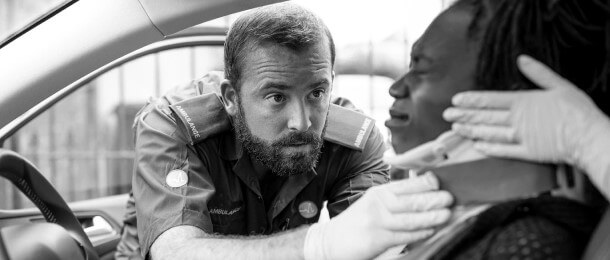News: 3 firefighters hospitalized after Hwy 47 crash in Uxbridge
UXBRIDGE, ON – Three firefighters were sent to a hospital after a crash on Highway 47 in Uxbridge on Monday,...
If you’ve been involved in a car accident in Canada, you might be thinking of what to do next.
After making sure you’re not injured, moving the vehicles to a safe location, and calling emergency services; you might think of grabbing your phone to snap pictures or shoot videos.
But can you legally film the scene of a car collision in Canada?
Yes, for the most part, especially when photographing or recording the automobiles, roadways, and evident damage involving the parties involved. But as it applies to recording dialogue between the parties, Canada’s one party consent law and the Criminal Code introduce significant legal considerations.
Comprehending the regulation will enable you to preserve useful evidence without breaking the law.
Below is information on how to video tape the scene of a car accident in Toronto and across Ontario.
Recording following an accident has some benefits for your safety, your insurance claim, and any following legal cases. Images and videos become compelling evidence for your police report, your driver’s insurance company, and even the courts, in the majority of cases.
Following a car accident, small details slip away from memory or turn into debating points.
A photo or video journal assists in preserving crucial evidence, like:
If you are required to attend a collision reporting centre, your documentation can serve to ensure that all is properly recorded.
Your insurance company’s driver’s insurance adjuster will consider your insurance claim based on what you provide them with.
Having high-quality visual evidence:
In fault cases, recorded evidence can tip the scales in your direction and avoid unwanted penalty points.
If another driver alters their account of the incident after departing from the scene, your recordings will prove useful.
A video from your dash-cam that indicates the other driver ran a stop sign or a picture that indicates your vehicle was parked can directly impact liability determinations.
In other instances, an insurance company or attorney can use your evidence to recreate the accident. Your job is to ensure the evidence is concise, pertinent, and obtained legally.
Recording apparent injuries to yourself or other passengers, or to anyone else involved, provides a dated account of the initial impact, especially if you are injured.
These details become vital if you have to quantify the extent of injuries for the purpose of substantiating a legal case or when dealing with medical personnel.
Unfortunately, there are some drivers who will attempt to shift blame or provide perjured testimony.
Having record of conversations, plate numbers, and the words of the other driver can protect against baseless charges of fault, speeding, or reckless driving.
If witnesses do stop to help, first get their consent to record conversations and their testimony. This is a minute-by-minute record of unembellished testimony that can aid your insurance claim or court proceeding.
A personal injury lawyer can use your recordings to reconstruct the accident, gather supporting evidence, and challenge inaccurate testimony from the other party or their insurer.
While admissibility depends on the circumstances, legally obtained recordings may be presented as evidence in court to help resolve disputes. Your lawyer can advise on whether your video or audio meets the requirements.
Weather conditions, lighting, and traffic on the roads can all be causes for accidents. Taking the time to record street signs, intersections, and visibility at the moment can help show contributing factors.
An ongoing video can help establish the sequence of events from the moment of the impact through police arrival or your trip to a collision reporting centre. This can be useful for both insurance companies and the courts.
In the event of a car accident in Canada, documenting the scene will assist you in preserving vital evidence for your insurance claim or case in court.
Use either your cellular phone or the camera in your glove compartment, and this is what you need to document:
Get multiple photos of all cars involved in the accident from different angles. Get close-up photos of dents, scratches, or crushed areas and also wide-angle shots of how the cars line up in relation to each other. This can help the driver’s insurance company calculate the property damage and determine fault.
Take photos of nearby street signs and traffic signals to indicate the precise location of the accident and any measures of traffic control that were in effect. This will assist police officers and legal professionals in comprehending the nature of the collision.
Document any skid marks, broken glass, or vehicle pieces on the road. Accident reconstruction specialists can use this data to determine the risk factors that led to the automobile accident, such as hard braking or turning in an effort to avoid another obstruction.
Illustrious the hazard lights and weather at the time of the car accident. Rain, snow, ice, or fog may have contributed to the accident and may be relevant to your police report or insurance claim.
Document the surrounding area of the accident, e.g., how the road was, the visibility, and traffic, including any employees working nearby. This context can give meaning to whether factors like construction, traffic, or poor signage contributed to the accident.
If it is safe and appropriate, photograph any injuries sustained by yourself or others. This evidence can be important for medical documentation and potential legal considerations, especially if the person injured requires long-term care or rehabilitation.
Always ensure you capture the licence plate number of all drivers with no involvement in the accident. You should also exchange and capture every driver’s licence number, name, and phone number. The data is also important in police statements and insurance claims.
If you are unable to record video, you can record audio. Under Canada’s one party consent statute, you can actually record a conversation provided that at least one of the parties to the discussion consents, which includes making sure that conversation consents are obtained.
So, if you are engaged in the discussion, you usually do not need to get written notice or verbal consent from the other driver to tape.
However, be aware that illicit recordings may become an issue if you are not a part of the conversation. In some instances, making a recording without the agreement of one of the participants could constitute a violation of the Criminal Code and be unlawful.
It’s also important to mention that while you may be allowed to record, there are still discernible policies and legalities as to how the recording might be used in a court case. Have whatever it is reviewed by an attorney before sharing or spreading a recording of a conversation.
At Grillo Law, we understand the stress and urgency that come with being involved in a car accident.
Our Toronto auto accident lawyers can:
We work to preserve your rights, elucidate complex legal matters, and help you receive fair compensation for damages, property damage, and other injuries. Contact us to discuss your case.

Blog
UXBRIDGE, ON – Three firefighters were sent to a hospital after a crash on Highway 47 in Uxbridge on Monday,...
HAMILTON, ON – A crossing guard was killed in a crash involving a trash truck in the Hill Park area...
BRAMPTON, ON – A man was left in critical condition as a result of a pedestrian crash that happened along...

Request a free consultation!
Call us today for a FREE consultation regarding your accident benefits claim.
Call: +1 855-225-5725
You will not pay any fees
until your case is won or settled
REQUEST A FREE CONSULTATION!
You will not pay any fees until your case is won or settled.
Thank you!
Amet minim mollit non deserunt ullamco est sit aliqua dolor do amet sint. Velit officia consequat duis enim velit mollit.